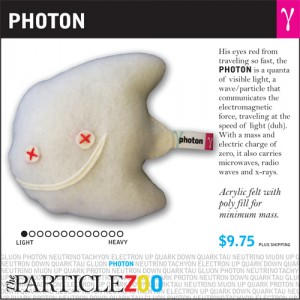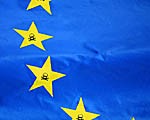Spliced feed for The Science Network |
| GE shows a glimpse into the future of lighting [OLEDs] [SciScoop Science Blog] Posted: |
| Posted: 29 Jul 2008 10:07 PM CDT The mainstream rap and hip hop communities are known not only for a way with words and penchant for controversy, but also for occasional drama. Rapper Greydon Square is no exception. On this week's episode of Skepticality, Derek and Swoopy hang loose with Greydon and talk about his musical influences, being embraced by the atheist community â and why this Compton native (raised as a legal orphan by the Department of Children & Family Services of California) refuses to be a product of the system. This posting includes an audio/video/photo media file: Download Now |
| Skeptics Guide #155 - July 9th, 2008 [The Skeptics' Guide to the Universe] Posted: 12 Jul 2008 07:25 AM CDT Interview with James Randi; News Items: Einstein Right Again, Conservapedia Denies Evolution, Controversial Chelation Autism Study; Special Report: Roswell 61 Years Later; Science or Fiction This posting includes an audio/video/photo media file: Download Now |
| Posted: 11 Jul 2008 04:25 PM CDT From The Particle Zoo, where you can buy subatomic particle plush toys. Sadly, Photon looks not so nice for me. via: CosmicVariance |
| Dirty Dozen Chemicals [Sciencebase Science Blog] Posted: 11 Jul 2008 07:00 AM CDT
It usually starts with a dose of nostalgia, pangs for a time when the world was simpler, and an aching for a natural world that we have long since lost. Unfortunately for sufferers, there never was a time of simplicity and natural living. In those halcyon days of yore, infectious disease was rife, infant mortality rates were high, and life expectancy was very low. Natural, at that time meant, inept remedies for lethal diseases such as polio, tuberculosis, bacterial infections, and plague. It meant poor harvests and widespread famine, and if disease didn’t catch you young, only those who kept their heads very low were safe from interminable wars, rock-breaking on distant sun-bleached shores, or the hangman’s noose, guilty or otherwise. Today, we may have more obesity and diabetes and certainly fare more incidences of the diseases of old age, but that’s because we have more food to eat (in the developed world, at least) and live longer. Certainly, natural does not equate to good - think snake venom, belladonna, and deadly toadstools, whereas most synthetic chemicals have a strong pedigree and have tested safety and toxicity. But throw in the fact that most chemophobics also have risk assessment blindness as well as dystatistica and we see pronouncements on all things chemical and synthetic as being bad. It is from this, that the UNEP Dirty Dozen Chemicals list emerges. Not only has it a far too conveniently tabloid name to be believed, but several of the entries are not single chemicals but whole families. Needless to say, several of these, while appearing to be the harbinger’s of doom media hyperbole would have us believe, are not necessarily as dangerous to us or the environment as you might think, and others, such as DDT could be used to help eradicate one of the biggest global killers. Indeed, the WHO now allows for the use of DDT to fight malaria-bearing mosquitoes.
These compounds are now banned under UNEP, but were not used in manufacturing before this list was created. There are other lists, such as the List of RoHO prohibited substances, which includes lead, cadmium, mercury, hexavalent chromium, polybrominated biphenyl (PBB) polybrominated diphenyl ether (PBDE) flame retardants, which is fair enough. And, industry-specific lists, such as the Volvo manufacturing black list, which lists all the compounds that may not be used in its production lines, including CFC cooling agents, the paint hardener methylenedianiline, and the previously discussed carbon tetrachloride In a forthcoming issue of the International Journal of Sustainable Manufacturing (2008, 1, 41-57), Jack Jeswiet, of the Department of Mechanical Engineering, at Queen’s University, Kingston, Ontario, Canada and Michael Hauschild of the Danish Technical University, Denmark, argue the case that market forces Greenhouse gas emissions, environmental impact, and toxic substances to be avoided must all be addressed by the EcoDesigner in any design situation, they say. The ecodesigner cannot control market forces, but must aware of them and rules should be followed to reduce the eco footprint. At the time of writing, a news release from the UK’s Royal Society’s summer science exhibition presented findings from consumers tests being carried out during the event which is open to the public. The researchers involved, from the National Physical Laboratory, are working towards producing the world’s first model that will predict how we perceive “naturalness”. They claim that the results could help manufacturers produce synthetic products that are so good they seem “natural” to our senses and are fully equivalent to the “real thing”, but with the benefits of reduced environmental impact and increased durability. Meanwhile, a new study shows that companies are significantly hijacking the language of environmentalists to their own marketing ends, presumably hoping to leverage the best out of the movement in selling their products. a |
| Narrow linewidth laser with fiber Raman amplification [yan.blog] Posted: 10 Jul 2008 03:15 PM CDT We have a new publication online now: multiwatts narrow linewidth fiber Raman amplifiers. Basically, the paper shows fiber Raman amplifier can be used to amplify narrow linewidth laser to a useful power level, while linewidth keeping narrow. This would be a surprise to most laser researchers. In this specific report, we have obtained 4.8 W, ~10MHz 1178nm laser with 27dB gain and more than 10% efficiency. The tricks and reason are explained in the paper. |
| Colour MRI, Agent Prion, Testing Testosterone [Sciencebase Science Blog] Posted: 09 Jul 2008 07:00 AM CDT
New insights offered by near infrared spectroscopy into the mineralogy of carbonate rocks could help improve the outlook for carbon capture and storage in efforts to reduce the effect of carbon dioxide emissions on the global climate. Although, personally I think the real relevance of this work will be in understanding the mineral found on Mars or other planets rather than some spurious and potentially misguided efforts to control the atmosphere. Not everything is black and white, perhaps with the exception of MRI. Aside from the artificial colours that can be added by computer, MRI is a technique of contrasts and greyscales. However, that could all change soon thanks to the ongoing development of microscopic magnetic particles by researchers in the US who hope to bring a little colour to MRI. Meanwhile, NMR spectroscopy (the original molecular MRI) has revealed significant difference between the infectious and non-infectious form of prions, errant proteins that replicate by converting other proteins into copies of themselves. The finding could lead to new insights into how prions cause brain diseases, such as CJD and may one day lead to a way to stop their spread. Faster and more accurate testing of complex systems such as skin and other turbid media could soon be possible thanks to a laser boost for Raman spectroscopy. The technique has potential applications in pharmaceutical research, forensic science and security screening. Another analytical boost comes with work being done at Argonne National Laboratory to develop a new super bright source of X-rays that are one hundred million times brighter than any currently operating laboratory source. The sources will open up new avenues in materials science such as the faster and more detailed analysis of high-temperature superconductors. Finally, in the current specNOW issue, a new analytical approach to testing for testosterone and related steroids in body fluids could spot illicit doping of athletes at coming sports events. a Colour MRI, Agent Prion, Testing Testosterone |
| How to Sunbathe Safely [Sciencebase Science Blog] Posted: 09 Jul 2008 03:00 AM CDT
“Dermatologists always say that tanning is bad because sunlight damages DNA of skin cells and kills them,” Gillie told me, “The way they say it makes it seem quite scary. But it doesnt surprise me that skin cells die in the process of protecting us against the sun - bowel cells die protecting us against food.” He adds that this process of cell death is a normal cycle of cell multiplication and death in the skin that With this in mind, the HRF has come up with a howto on sunbathing so that UV users and sunworshippers can glean all the benefits with none of the harm:
Why midday? the sun is strongest in the middle of the day and so maximum vitamin D synthesis occurs in the shortest time. This is important especially in the UK climate where it’s often overcast and UV intensity can be low. More to the point, one’s lunch hour is a great time to get out of the workplace on a sunny day (unless you’re a gardener of course, in which case you may want to sit in darkened room to eat your sandwiches). Gillie adds, “Gardening is very good - you need to get as much sun/vit D as you can now to see you through the winter,” he told me, “My suggestion is to protect your face with a hat much of the time because the face is otherwise always exposed - but be sure to take your shirt off and wear shorts whenever it is hot - and avoid burning.” The full report is available as a pdf (912kb) here. I raised the issue of sunshine safety and cancer prevention in a previous write-up - sunshine UPDATE: New York Times and others are reporting on research this week that suggests that some types of sunscreen may do more harm than good, especially if they give users a false sense of security about sun exposure. Other recent work suggests that in the laboratory, at least, UVB (ultraviolet-B rays; 315–280 nm) do more damage to the DNA of skin cells (and so putatively lead to melanomas) than UVA (ultraviolet-A; 400–315 nm, lower energy per photon). The difference between UVA and UVB is simply a matter of wavelength/frequency of the ultraviolet electromagnetic radiation. The longer the wavelength (shorter frequency), the lower the energy. This post was originally published July 9, 2006. a |
| Skeptics Guide #154 - July 2nd, 2008 [The Skeptics' Guide to the Universe] Posted: 05 Jul 2008 07:25 AM CDT Interview with Dr Dean Edell; News Items: Darwin-Wallace Anniversary, Tunguska Remembered, Creationst Bill Passes in Louisana, Nanowire Battery, SGU on Youtube; Your Questions and E-mails: Collective Skeptics, Body Fruit; Randi Speaks: Speaker Cables; Science or Fiction This posting includes an audio/video/photo media file: Download Now |
| 2007 Journal impact factors [yan.blog] Posted: 03 Jul 2008 03:52 PM CDT |
| You are subscribed to email updates from The Science Network To stop receiving these emails, you may unsubscribe now. | Email Delivery powered by FeedBurner |
| Inbox too full? | |
| If you prefer to unsubscribe via postal mail, write to: The Science Network, c/o FeedBurner, 20 W Kinzie, 9th Floor, Chicago IL USA 60610 | |

 We live in an age of chemophobia, an insidious disease that threatens our way of life, precludes R & D that might solve many of the environmental issues we face and prevents disease-stopping compounds being deployed where they are most needed in the developing world. Chemophobia is an irrational fear of all things chemical and is usually contracted by those already with naturophilia, the irrational love of all things natural.
We live in an age of chemophobia, an insidious disease that threatens our way of life, precludes R & D that might solve many of the environmental issues we face and prevents disease-stopping compounds being deployed where they are most needed in the developing world. Chemophobia is an irrational fear of all things chemical and is usually contracted by those already with naturophilia, the irrational love of all things natural. I’ve got some wide-ranging research to report in this week’s SpectroscopyNOW, including mineral tests, colour MRI, the Agent Smith of prions, and a new approach to spotting doped athletes.
I’ve got some wide-ranging research to report in this week’s SpectroscopyNOW, including mineral tests, colour MRI, the Agent Smith of prions, and a new approach to spotting doped athletes.
No comments:
Post a Comment